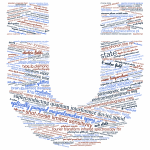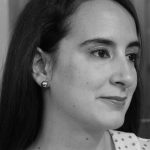Quantum News Briefs July 29: WEC on ‘The need for a shift in mindset for quantum to succeed’, D-Wave expands global corporate base, a roadmap for future of quantum simulation and MORE

Quantum News Briefs today opens with D-Wave’s announcement about the expansion of its global 2000 customer base, followed by a joint release from NUS & LMS about their first demonstration of a secure quantum network with untrusted quantum devices. An important essay published by World Economic Forum with lead author Duncan Hunter explains why “There Needs to Be a Shift in Mindset for Quantum to Succeed” and MORE today.
D-Wave Expands Global 2000 Customer Base
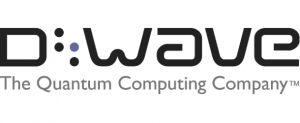
D-Wave Systems Inc. (“D-Wave”) announced that it has added a number of customers, including Forbes Global 2000 customers, to its portfolio and increased diversity in its commercial use cases. New customers working with D-Wave on quantum hybrid use cases include Deloitte, Koç Holding, CaixaBank, CoSyne Therapeutics, and Qcenter/SKK University.
In addition to a growing customer base, new use cases are being explored across manufacturing, logistics, financial services, autonomous driving, and life sciences utilizing quantum hybrid technologies. Applications include 3D bin packing of shipping containers, vessel logistics optimization, optimum pricing, employee scheduling in airports, dynamic body-shop scheduling, minimizing investment while keeping risk consistent in hedge funds, portfolio optimization, supply chain optimization, autonomous driving simulation, and simulation of therapeutics for cancer treatment.
Enterprises that are ready to get started building in-production quantum hybrid applications can sign up for the D-Wave Launch program, a quantum jump-start program for businesses.
“We are at an interesting inflection point in the evolution of quantum computing. Increasingly, we’re seeing large enterprises, and ground-breaking start-ups, begin to explore and embrace the power of quantum computing for their most complex use cases,” said Mark Snedeker, senior vice president, Growth, at D-Wave.
****
First Demonstration of a Secure Quantum Network with Untrusted Quantum Devices
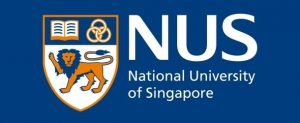 An international team comprising researchers from the National University of Singapore (NUS) and LMU Munich (LMU) have, for the first time, successfully demonstrated a new form of quantum key distribution (QKD) that is secure even if the users are not privy to the underlying quantum hardware. The work paves the way for a more secure and open quantum internet. It was published in the scientific journal Nature on 27 July 2022 and the collaboration was jointly led by Assistant Professor Charles Lim from NUS and Professor Harald Weinfurter from LMU, who oversaw the project’s theory and experiment respectively. Quantum Briefs summarizes below, click here to read complete announcement from Science Alert
An international team comprising researchers from the National University of Singapore (NUS) and LMU Munich (LMU) have, for the first time, successfully demonstrated a new form of quantum key distribution (QKD) that is secure even if the users are not privy to the underlying quantum hardware. The work paves the way for a more secure and open quantum internet. It was published in the scientific journal Nature on 27 July 2022 and the collaboration was jointly led by Assistant Professor Charles Lim from NUS and Professor Harald Weinfurter from LMU, who oversaw the project’s theory and experiment respectively. Quantum Briefs summarizes below, click here to read complete announcement from Science Alert
The new experiment is based on device-independent QKD (DIQKD). Critically, the security of DIQKD does not depend on the specification of the quantum devices used in the protocol. There are however two major challenges in implementing DIQKD: (1) the underlying quantum noise must be very low and (2) the system needs to be highly efficient in creating good quality entanglement between the two users. Achieving these two conditions at the same time over long distances is a long-standing problem.
To tackle the first challenge, the team used a new DIQKD protocol. The protocol has an extra set of key-generating measurements for the users while other protocols typically have just one. This makes the protocol more tolerant to noise and loss, and makes it harder for an eavesdropper to steal information. This protocol was invented by Asst Prof Lim and colleagues at NUS and the work was published in Nature Communications in 2021.
To overcome the second challenge, the LMU team needed to create very high-quality entanglement between two quantum devices separated 400 metres apart. Here, entanglement is created via quantum swapping, where independent photons from locally generated photon-atom entangled pairs are transmitted over a 700 metres optical fiber and mixed in a joint measurement scheme.
****
A Roadmap for the Future of Quantum Simulation
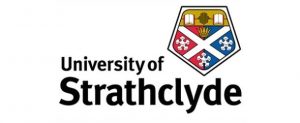
A roadmap for the future direction of quantum simulation has been set out in a paper co-authored at the University of Strathclyde. The paper, published in Nature, explores near- and medium-term possibilities for quantum simulation on analogue and digital platforms to help evaluate the potential of this area. It has been co-written by researchers from Strathclyde, the Max Planck Institute of Quantum Optics, Ludwig Maximilians University in Munich, Munich Center for Quantum Science and Technology, the University of Innsbruck, the Institute for Quantum Optics and Quantum Information of the Austrian Academy of Sciences, and Microsoft Corporation.
Professor Andrew Daley, of Strathclyde’s Department of Physics, is lead author of the paper. He said: “There has been a great deal of exciting progress in analogue and digital quantum simulation in recent years, and quantum simulation is one of the most promising fields of quantum information processing. It is already quite mature, both in terms of algorithm development, and in the availability of significantly advanced analogue quantum simulation experiments internationally. Click here to read complete university announcement.
****
There Needs to Be a Shift in Mindset for Quantum to Succeed
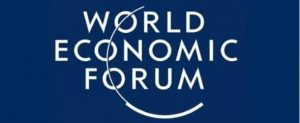
Duncan Jones Head of Cybersecurity, Quantiuum; Honeywell, Filipe Beato, Lead, Centre for Cybersecurity, World Economic Forum; and Itan Barmes, Project Fellow, Quantum Security, World Economic Forum Geneva are the authors of this extensive article published by the World Economic Forum. Quantum News Briefs summarizes below; the entire article is well worth the time to read on this link.
Despite the promising progress and opportunities in quantum technology, there is a risk that organizations will fail to benefit fully from the advances in quantum computing. To stay ahead of the curve and mitigate this risk, business leaders need to make two important mindset shifts.
1. Understand the quantum timeline as adopting quantum technology is not an overnight task
Some business leaders believe fifteen or twenty years will pass before quantum computing will make an impact, perhaps around the same time that cybersecurity is threatened. Those with this mindset are likely to underinvest in quantum skills and technology, which may prove an existential mistake. Taking a pessimistic attitude toward quantum progress may also lead businesses to be exposed to cybersecurity risks.
2. Break down silos by educating and empowering teams to understand the impact and to derive an action plan. Despite the clear mandate from governments, quantum is often discussed in the periphery of companies. Where there are teams focused on quantum, they are often small and siloed, facing an ongoing struggle to engage their colleagues in meaningful projects. A surprising number of these quantum teams are grass-roots efforts.
Four key actions to enable the potential of quantum computing
1. Explore early use cases for quantum within the next five years. Adopting quantum technology is not an overnight task.
2. Address the critical skills gap. Top companies have been snapping up the talent for years already. It’s unclear whether the inevitable growth in demand will be matched by the increase in talent hitting the market.
3. Plan and prepare for the quantum-threat. The positives of quantum are coming soon, but so are the negatives. Businesses must prepare, today, for the impact quantum will have on their cybersecurity systems.
4. 4. Weave quantum into the business and technology strategy. Executives should focus on making quantum a major strand of company strategy, rather than a fringe activity supported by grass-roots enthusiasts.
****
Sandra K. Helsel, Ph.D. has been researching and reporting on frontier technologies since 1990. She has her Ph.D. from the University of Arizona.




















